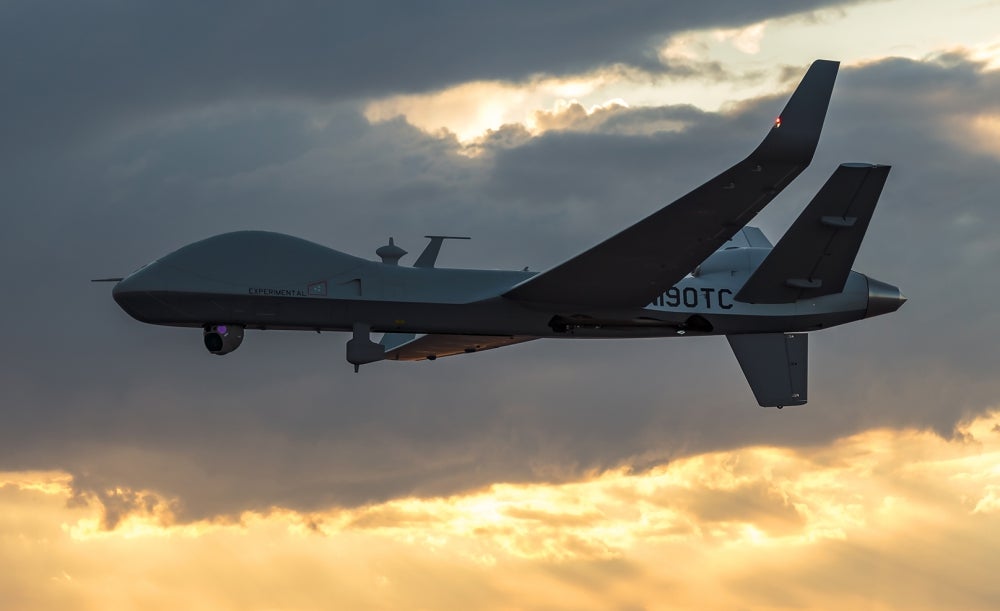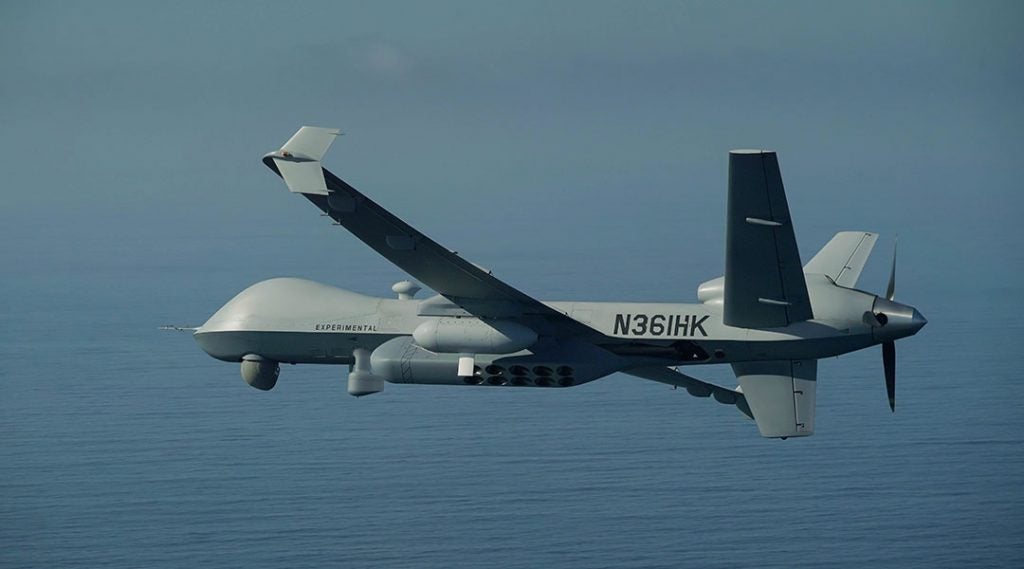General Atomics Demonstrates “World’s First” MQ-9 Anti-Submarine Warfare Capabilities
General Atomics has announced the recent completion of development and testing of anti-submarine warfare capabilities for the MQ-9. In the 19 January announcement, General Atomics says that the capability, which is under development for the MQ-9B SeaGuardian, in partnership with US Navy Air Systems Command, is the first time a remotely piloted aircraft has been equipped with self-contained ASW capabilities anywhere in the world.
In a November 24 test, a General Atomics-owned MQ-9A Block 5 demonstrated its ability to deploy and remotely process data from deployed “A” size Directional Frequency Analysis and Recording (DIFAR-AN/SSQ-53G), Directional Command Activated Sonobuoy System (DICASS-AN/SSQ-62F) and Bathythermograph (BT-AN/SSQ-36B) sonobuoys.
The sonobuoys were deployed on a US Navy test range on the Pacific coast, hunting a MK-39 EMATT (Expendable Mobile ASW Training Target). Data from the sonobuoys was transmitted in real time via satellite communications to the Laguna Flight Operations Facility at the Yuma Proving Grounds. Using one BT, seven DIFAR, and two DICASS sonobuoys, the MQ-9 was able to detect and track the EMATT over a three-hour period, with a track of the target generated using General Dynamics Mission Systems-Canada’s UYS-505 Sonobuoy Processing Systems.
“This demonstration is a first for airborne ASW. The successful completion of this testing paves the way for future development of more Anti-Submarine Warfare capabilities from our MQ-9s,” said GA-ASI President David R. Alexander. “We look forward to continuing collaboration with the U.S. Navy as they explore innovative options for distributed maritime operations in the undersea domain.”

According to General Atomics, the production MQ-9B SeaGuardian will be equipped with four wing stations that can carry up to four sonobuoy dispensers, allowing it to carry and dispense up to 40 ‘A’ size or 80 ‘G’ size sonobuoys for remote ASW missions “anywhere in the world”. General Atomics says that the MQ-9B SeaGuardian’s endurance of over 18 hours and 1,200 nautical mile mission radius makes it suitable as a low-cost complement to manned maritime patrol aircraft in a manned-unmanned teaming arrangement.
The company notes that it has already received orders for ASW capability from two separate foreign customers (the United Arab Emirates has received State Department approval for the purchase of ASW-equipped MQ-9Bs, and the Indian Navy has expressed interest in procuring ASW-equipped MQ-9Bs and currently operates two SeaGuardians on lease), adding that it expects future demand for the MQ-9B SeaGuardian to be “extremely strong”.

